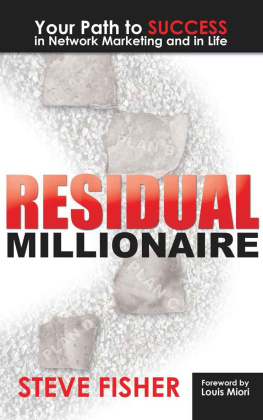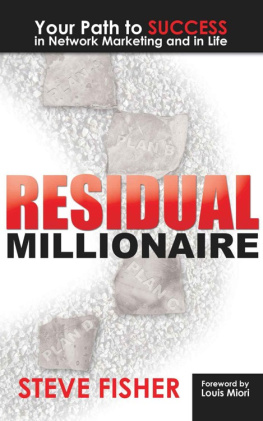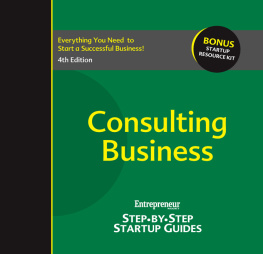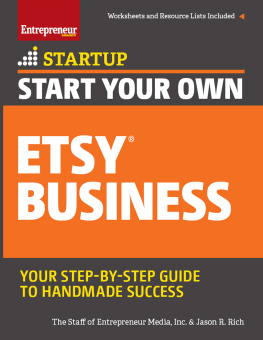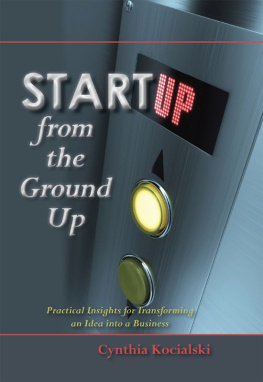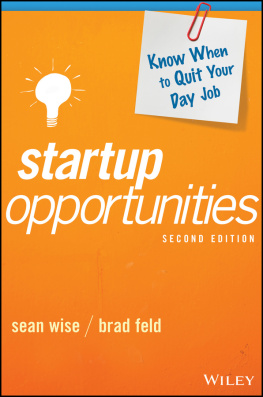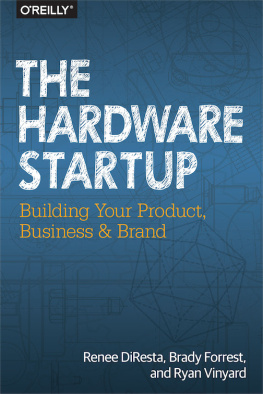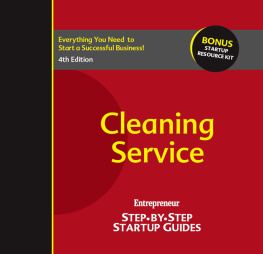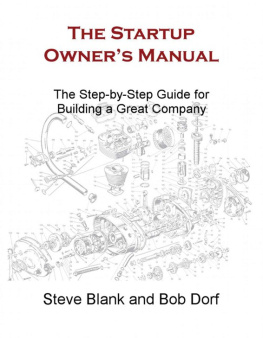
Copyright 2016 by Steven Fisher and Ja-Na Duane. All rights reserved. Except as permitted under the United States Copyright Act of 1976, no part of this publication may be reproduced or distributed in any form or by any means, or stored in a data base or retrieval system, without the prior written permission of the publisher.
ISBN: 978-0-07-183237-3
MHID: 0-07-183237-8
The material in this eBook also appears in the print version of this title: ISBN: 978-0-07-183236-6, MHID: 0-07-183236-X.
eBook conversion by codeMantra
Version 1.0
All trademarks are trademarks of their respective owners. Rather than put a trademark symbol after every occurrence of a trademarked name, we use names in an editorial fashion only, and to the benefit of the trademark owner, with no intention of infringement of the trademark. Where such designations appear in this book, they have been printed with initial caps.
McGraw-Hill Education eBooks are available at special quantity discounts to use as premiums and sales promotions or for use in corporate training programs. To contact a representative, please visit the Contact Us page at www.mhprofessional.com.
All art in this book was created for The Startup Equation unless explicitly noted.
TERMS OF USE
This is a copyrighted work and McGraw-Hill Education and its licensors reserve all rights in and to the work. Use of this work is subject to these terms. Except as permitted under the Copyright Act of 1976 and the right to store and retrieve one copy of the work, you may not decompile, disassemble, reverse engineer, reproduce, modify, create derivative works based upon, transmit, distribute, disseminate, sell, publish or sublicense the work or any part of it without McGraw-Hill Educations prior consent. You may use the work for your own noncommercial and personal use; any other use of the work is strictly prohibited. Your right to use the work may be terminated if you fail to comply with these terms.
THE WORK IS PROVIDED AS IS. McGRAW-HILL EDUCATION AND ITS LICENSORS MAKE NO GUARANTEES OR WARRANTIES AS TO THE ACCURACY, ADEQUACY OR COMPLETENESS OF OR RESULTS TO BE OBTAINED FROM USING THE WORK, INCLUDING ANY INFORMATION THAT CAN BE ACCESSED THROUGH THE WORK VIA HYPERLINK OR OTHERWISE, AND EXPRESSLY DISCLAIM ANY WARRANTY, EXPRESS OR IMPLIED, INCLUDING BUT NOT LIMITED TO IMPLIED WARRANTIES OF MERCHANTABILITY OR FITNESS FOR A PARTICULAR PURPOSE. McGraw-Hill Education and its licensors do not warrant or guarantee that the functions contained in the work will meet your requirements or that its operation will be uninterrupted or error free. Neither McGraw-Hill Education nor its licensors shall be liable to you or anyone else for any inaccuracy, error or omission, regardless of cause, in the work or for any damages resulting therefrom. McGraw-Hill Education has no responsibility for the content of any information accessed through the work. Under no circumstances shall McGraw-Hill Education and/or its licensors be liable for any indirect, incidental, special, punitive, consequential or similar damages that result from the use of or inability to use the work, even if any of them has been advised of the possibility of such damages. This limitation of liability shall apply to any claim or cause whatsoever whether such claim or cause arises in contract, tort or otherwise.
This book is dedicated to Ja-Na.
She is on the cover with me but is really the reason this book is written
and in your hands. She is my wife, my life, my best friend. And from my
two page wedding vows, I reaffirm to always be your partner in fun
and adventure, your lover, your sounding board, your co-pilot, your sous
chef, your copyeditor, and your best friend. And to always flush the
toilet and remember to put the seat down when I am done.
Love you, babe.
Steve
Love you too.
Ja-Na
In Memory of Karl Baehr
A Teacher, A Mentor, A Friend. And yes. Profit is good.
Contents
Acknowledgments
W e want to thank our parents (SteveTerry, Carol, and Joanne, Ja-NaMike, Leslie, and Cindy) who really dont read business books so they wont know they are in here unless someone tells them.
We want to thank Caleb Sexton who was the creative glue who put up with Steve and interpreted his haiku and sketches to turn them into graphics that made sense.
We want to thank Kate Rutter who really got the essence of the Startup Equation and so clearly and quickly created sketchnotes that anchored each of the element chapters.
We want to thank Britt Raybould who patiently proof-read, edited, and re-edited our book to prevent this from becoming Ulysees 2 , but without the stream-of-consciousness style that made that book great. She is awesome.
We want to thank our agent Carole Jelen at Waterside who understood the vision of this book and helped us find the perfect home for it.
We want to thank the team at McGraw-Hill, including Casie Vogel, Peter McCurdy, and most importantly, Donya Dickerson, who has been patient, creative, and just plain awesome.
We also want to thank caffeine and sugar, two elements that are not in the Startup Equation, but both helped us write this book.
Finally, we want to thank all of the entrepreneurs out there for whom this book is written. You are the pioneers, the explorers, and the rebels who create things for the world we never could imagine. You make this world a better place. This book is for you.
Foreword
W hy dont you just fix that?
It was a late summer night at the office. Many of my friends were on romantic dinners or exploring Colorado on their bikes. I, however, was tucked away in an office drinking warm beer with some other stressed out software developers. It struck me that all these startup friends had never worked together. These three developers are now lifelong friends, but before that night had not really had a chance to work on something together. One of them had a problem with their newly launched application, and I happened to know just the right person to fix the problem who joined us at the office that night. There should be a way we can work together on projects.
Why dont you just fix that?
I could have left it there. I could have just passed on it. It could have joined thousands of ideas in the trash can. For some reason that night, I jumped to action and within an hour, I had a website, ticketing system, and blog post with just a single line written, Lets do this.
Looking back, the launch was both structurally embarrassing and completely perfect. No logo. Under 200 words describing it. No venue. No partners. No sponsors. No money. I wasnt known nor very connected. I chose the name Startup Weekend, which was so generic that people claimed to have heard of it before we had even done anything. Even with all these obvious flaws, something big started happening: people were actually signing up. We had five people. Then ten people. Then thirty. Then, just three weeks later we had eighty-eight people show up to a small office above a bike shop in Boulder, Colorado.
Startup Weekend was born.
We all gathered at 6 p.m. to discuss what we all wanted to build. Ideas went around about event organizing, finding friends, parking, trail mapping, and voting were presented. This group was having a hard time building consensus, until we began discussing a product idea. Thats when we struck gold. Thats when we had consensus.
We made a voting application for groups just like us. Or we tried to. Throughout the weekend we picked a name (VoSnap), selected a programming language (Ruby on Rails), created a marketing plan, and created a group cheer (voooooooo-snap). We had all the functional things of a startup, in just one weekend, which was against everything we were told was possible. But it worked, because we had the basic elements of our own Startup Equation.
Next page

